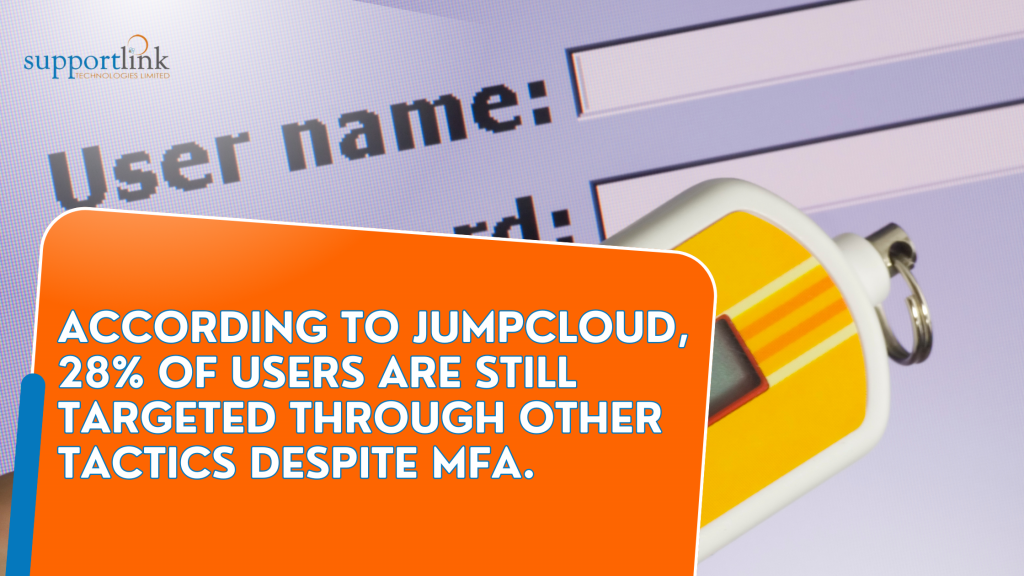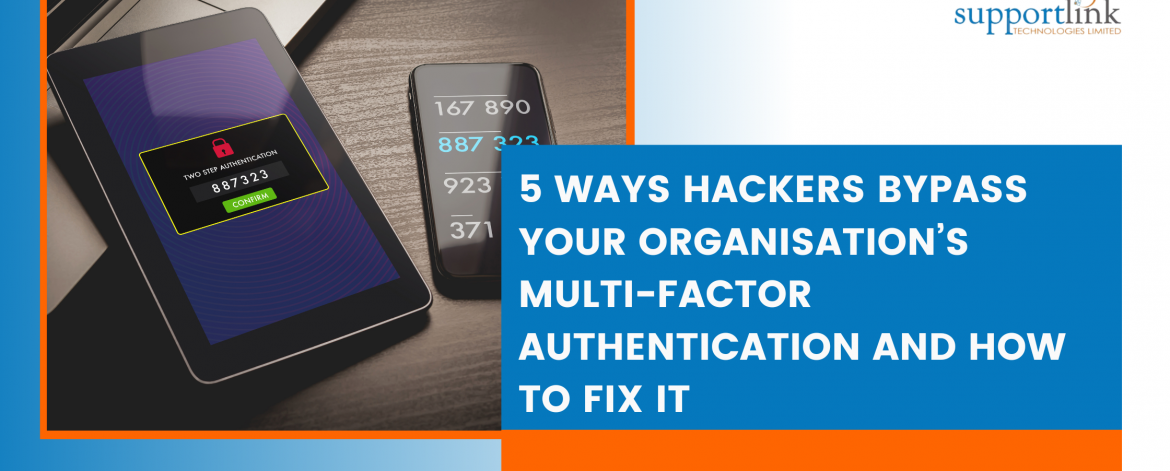Multi-factor authentication is a critical cybersecurity setup for organisations. It adds an extra layer of security to keep hackers away from sensitive data. However, there are ways hackers can bypass multi-factor authentication. Keep reading this post to discover five ways hackers bypass your organization’s multi-factor authentication and how to fix it.
Multi-factor authentication (MFA) is a security measure used to protect accounts where users provide two or more authentication factors to access an account. Two-factor authentication is a subset of MFA where exactly two authentication factors are required to access an account. According to JumpCloud, 28% of users are still targeted through other tactics despite MFA. MFA is an effective cybersecurity measure. However, malicious hackers have devised sophisticated methods to bypass it.
5 Strategies Used To By-pass Multi-factor Authentication
Malicious hackers use many strategies to bypass multi-factor authentication to access sensitive data and execute cyber crimes. The list keeps growing as cyber attacks continue to evolve. Organisations must breach the knowledge gap by understanding the tactics used by cyber criminals and taking adequate steps to ensure cybersecurity.
Here are five of those strategies used by hackers to bypass multi-factor authentication.

Brute Force Attacks
Brute force happens when hackers experiment with different password combinations until they succeed. As an authentication factor, brute force relies on basic password combinations, like a temporary four-digit PIN. A four-digit PIN is easier to crack than a complex alphanumeric password. If a hacker successfully cracks a four-digit PIN, one authentication factor has been compromised. This moves them closer to having access to such accounts, which can potentially lead to a cybercrime.
Social Engineering And Phishing Attacks
Hackers can use a combination of social engineering and phishing to disrupt the multi-factor authentication workflow and trick users into disclosing their MFA tokens. This strategy can be used when an attacker has already cracked a victim’s PIN or password and needs an additional authentication factor. In a phishing attack, the victim may be tricked into providing sensitive information or must click a malware-infested link in an email, which helps compromise their account.
Exploiting Generated Tokens
Many apps rely on authentication apps such as Google Authenticator to generate tokens for authentication. Such authentication apps usually provide a list of manual authentication codes as backups to avoid lock-outs. If these codes are printed or saved in an unsecured place, the hacker could access them through physical theft or other means. This access to manual authentication codes can compromise the victim’s account.
Session Hijacking
Session hijacking happens when a cyber attacker compromises a user’s login session. Session cookies are essential in session hijacking. They usually contain a user’s authentication credentials and track activities during online sessions. These cookies remain active until the end of the session when the user logs out. Session hijacking occurs when the server does not flag session cookies as secure. If users do not send cookies back to the server through HTTPS, hackers can hijack the session by stealing the cookie, bypassing multi-factor authentication.
SIM Hacking
SIM hacking happens when an attacker accesses a user’s SIM card. Techniques to achieve SIM hacking include SIM swapping, SIM jacking, and SIM cloning. When hackers access a victim’s SIM, they will have control over the phone number. This gives them access to one-time generated passwords (OTPs), which enables them to provide authentication factors during cyber attacks.
How Support Link Technologies’ Can Help Your Organization
BeyondTrust’s privileged remote access provided by Support Link Technologies can help your organisation’s IT team with visibility and control. Privileged remote access can help your organisation to access important assets without compromising security. It also ensures that employees and third-party vendors have the least privilege while accessing the network remotely.
Privileged remote access reduces the entry points of cyber attacks, such as hackers bypassing MFA. We can provide cybersecurity training services for your staff. Our training services are extensive and tailored to your organisational needs.
Conclusion
Multi-factor authentication is a crucial cybersecurity requirement for organisations and an effective cybersecurity measure. However, cybercriminals have devised ways to bypass it. This post describes how hackers can bypass your organization’s multi-factor authentication and how to fix it.
Do not wait to suffer revenue loss or damage to your organisation’s reputation due to cyber-attacks. Invest in cybersecurity and training services with Support Link Technologies to protect your organisation from cyber-attacks. Contact us today to learn more about our services and customised training programs.


